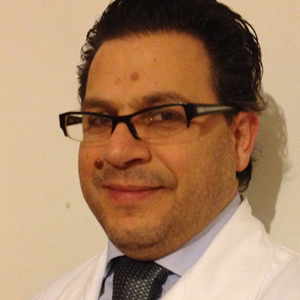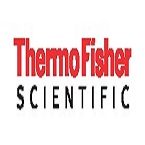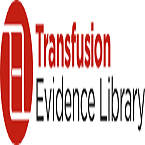About Conference
On behalf of the "10th World Congress on Epigenetics and chromosome" Conference we tend to square measure glad invite all the medical professionals within the field of Epigenetics and Chromosome to arrange the scheduled on July 24-25, 2023 Amsterdam, Netherlands. The principal objective of this conference is to produce a global platform for leading edge analysis in chromosome and Epigenetics.
The encompassing goal of this conference is to cover chromatin and chromosome Dynamics, Cytogenetics, sign to chromosome, Nuclear design and Dynamics, biological process Epigenetics, Epigenetics and Human Diseases, Genome Stability, Environmental Epigenetics, Tran’s people Inheritance, genomics, System Biology and Super Resolution research.
Conference has Associate in Nursing increased options of scientific partnerships and alliances with development agencies, Institutes, leading analysis organizations, non-government organizations, and different entities to market the development-oriented analysis across the globe through live streaming. Our aim is to provide cancer surgeons, oncologist researchers, students industrial Deligates and professionally involved in study of Epigenetics.
Why to attend?
Epigenetics 2023 conference provide a platform to globalize the research by installing a dialogue between industries and academic organizations and knowledge transfer from research to industry. Epigenetics 2023 aims in proclaiming the knowledge and share new ideas amongst the professionals, industrialists and students from research areas of Epigenetics, Oncology & cancer and all the related disciplines to share their research experiences and indulge in interactive discussions and special sessions at the Conferences.
The subject of the gathering is largely created for investigators, specialists, authorities, pros, drug masters, support specialists, energetic researchers, and understudies to share their investigation work to the party. We similarly welcome Presidents, CEO's, Policy makers, delegates and mechanical specialists from the Pharma and Healthcare regions for creating the affair a stand-out stage to share data, contemplations and to travel along with the canny Keynote addresses, all-hands meetings, workshops, conversations, standard presentations, introductions and B2B attempting to search out.
Epigenetics 2023 welcomes keynote speakers, oral/poster presenters, young researchers, business delegates, student delegates and exhibitors from every part of the globe.
Webinars are for anyone wishing to continue their medical education without travelling. They’re interactive program that include case-based presentations, online assessments, and live discussions with key opinion leaders providing useful tips for your daily clinical practice
The organizing committee is gearing up for an exciting and informative conference program including Keynote talks, plenary lectures, symposia, workshops, poster presentations on a diffusion of topics associated with the sphere of Oncology. We invite you to affix us at the Epigenetics 2021, where you’ll make certain to possess a meaningful experience expertly from round the globe.
All members of the Epigenetics 2023 organizing committee expect to meet you.
Other Benefits of Joining:
-
Get your abstract published with DOI
-
Get Certified for your participation
-
Reduced Costs Affordability
-
Knock Down Geographical Barriers
-
Convenience from comfort of your own residence or from work
-
They’re Archived: Ability to look at events within the recording
-
Great resource for learning new career skills
-
Learn from the Pros
-
Global exposure to your research
-
Make new connections
-
Significant time saving
-
Increased engagement
-
Wider Reach
-
More Engaging
-
Position yourself because the expert
Sessions / Tracks
Epigenetics is that the study of heritable changes in natural phenomenon (active versus inactive genes) i.e. an adjustment in phenotype without an adjustment in genotype. An epigenetic change is also a natural & characteristic occurrence yet can likewise be plagued by some factors including age, the environment/lifestyle, and illness state. Alternately, epigenetic change can have all the more harmful impacts which will bring illnesses, disease. Major areas of Epigenetics are.
Oncology is a branch of medicine that deals with the prevention, diagnosis, and treatment of cancer. A medical professional who practices oncology is an oncologist Cancer survival has improved due to three main components: improved prevention efforts to reduce exposure to risk factors improved screening of several cancer and improvements in treatment.The three main divisions:
-
Medical oncology:
-
Surgical oncology:
-
Radiation oncology
A brain tumor occurs when abnormal cells form within the brain There are two main types of tumors cancerous (malignant) tumors and benign (non-cancerous) tumors Cancerous tumors can be divided into primary tumors, which start within the brain, and secondary tumors, which most commonly have spread from tumors located outside the brain, known as brain metastasis tumors All types of brain tumors may produce symptoms that vary depending on the part of the brain involvedsThe most common primary brain tumors are
-
Gliomas
-
Meningiomas
-
Pituitary adenomas
-
Nerve sheath tumors
The recent development of high-throughput technologies has led to an explosion of biological data and has enabled mining biomarkers and drug targets in a more systematic way. Bioinformatic and biostatistical approaches are skilled at dealing with large data sets and therefore widely used in mining disease biomarkers and drug targets in this “omic” era.
By the tip of the last century, it absolutely was known that DNA by itself doesn't determine all characteristics of an organism, including humans. The environment, stress one perceives, and nutrition, to call some, play a big part in determining the response of an organism, the utmost amount because the DNA itself. Thus, it's known now that both nature and nurture play equally important roles within the responses observed both at the cellular and organism levels.
-
Nutritional
-
Tobacco Smoke
-
Physical Activity
-
Alcohol
-
Pollutans
-
Emotional
Gene mapping describes the methods used to identify the locus of a gene and the distances between genes Gene mapping can also describe the distances between different sites within a gene. The essence of all genome mapping is to place a collection of molecular markers onto their respective positions on the genome.
-
Genome mapping
-
Genetic mapping
-
In gene mapping
-
Physical mapping
Ranges of epigenetic idea affect our genetic programme. The inter-generational transmission of epigenetic marks is supposed to manage via four principal means dramatically differ in their information content: DNA methylation, histone modifications, microRNAs and nucleosome positioning.
• Role in gametogenesis
• Role in embryogenesis
• Role in infertility
• Role in assisted reproductive technology
• Transgenerational epigenetic inheritance
Although brain tumours are rare compared with other malignancies, they are responsible, in many cases, for severe physical and cognitive disability and have a high case fatality rate. The diagnosis is made by a combination of imaging and histological examination of tumour specimen. Contrast-enhanced MRI is the gold standard imaging modality and provides highly sensitive anatomical information about the tumour.
-
Pilocytic astrocytoma
-
Pilomxoid astrocytoma
-
Subependymal giant cell astrocytoma
-
Pleomorphic xanthoastrocytoma
Genome editing is a method that lets scientists change the DNA of many organisms, including plants, bacteria, and animals. Editing DNA can lead to changes in physical traits, like eye color, and disease risk. Scientists use different technologies to do this. The first genome editing technologies were developed in the late 1900s. More recently, a new genome editing tool called CRISPR, invented in 2009,
-
Genome engineering
-
General principles
-
Homology directed
-
Non homologous end joining
A primary transcript is the single-stranded ribonucleic acid (RNA) product synthesized by transcription of DNA, and processed to yield various mature RNA products such as mRNAs, tRNAs, and rRNAs.
-
RNA polymerase, together with one or more general transcription factors, binds to promoter DNA.
-
RNA polymerase generates a transcription bubbleRNA polymerase adds RNA nucleotides
-
RNA sugar-phosphate backbone forms with assistance from RNA polymerase to form an RNA strand.
-
Hydrogen bonds of the RNA–DNA helix break, freeing the newly synthesized RNA strand.
Structural inheritance is an often-neglected form of nongenetic inheritance. This is in contrast to the transmission of digital information such as is found in DNA sequences, which accounts for the vast majority of known genetic variation. Structural inheritance was discovered by Tracy Sonneborn, and other researchers, during his study on protozoa in the late 1930. .
-
Multiple Inheritance.
-
Multilevel Inheritance.
-
Single Inheritance
-
Hierarchical Inheritance.
-
Hybrid Inheritance.
nucleosome positioning” broadly to indicate where nucleosomes are located with respect to the genomic DNA sequence. Although nucleosome positioning is a dynamic process, sequencing-based mapping approaches identify the positions of individual nucleosomes in a single cell at a specific time.
-
Nucleosome positioning is strongly affected byDNA sequence
-
Poly tracts are important for nucleosome depletion
-
Aspects of positioning not determined by DNA sequence
Since Mendel, studies of phenotypic variation and disease risk have emphasized associations between genotype and phenotype among affected individuals in families and populations. Although this paradigm has led to important insights into the molecular basis for many traits and diseases, most of the genetic variants that control the inheritance of these conditions continue to elude detection.
-
Enviromental influences
-
Genetic factors
-
Gene-environment interactions
-
Frequency, magnitude & persistence
A nearly universal mechanism of epigenetic signalling is DNA methylation. In bacteria, DNA methylation has roles in genome defence, chromosome replication and segregation, nucleoid organization, cell cycle control, DNA repair and regulation of transcription
-
Techniques for DNA methylation detection
-
DNA replication initiation
-
Methyl-directed mismatch repair
-
Dam Methyltransferase in escherichia Coli
Understanding epigenetic processes holds immense promise for medical applications. Advances in Machine Learning (ML) are critical to realize this promise. Previous studies used epigenetic data sets associated with the germline transmission of epigenetic transgenerational inheritance of disease and novel ML approaches to predict genome-wide locations of critical epimutations.
Epigenetics is changing the widely accepted linear conception of genome function by explaining how environmental and psychological factors regulate the activity of our genome without involving changes in the DNA sequence. Research has identifi ed epigenetic mechanisms mediating between environmental and psychological factors that contribute to normal and abnormal behavioral development
-
Epigenetics of psychopathology: The case of schizophrenia
-
The infl uence of social environment on the epigenome
-
Conceptual implications
-
Behavioral epigenetics: how the environment ‘gets into the mind’
Track 17. Computational modeling
Computational modeling is the use of computers to simulate and study complex systems using mathematics, physics and computer science. A computational model contains numerous variables that characterize the system being studied. Simulation is done by adjusting the variables alone or in combination and observing the outcomes. Computer modeling allows scientists to conduct thousands of simulated experiments by computer.
-
Modeling infectious disease spread to identify effective interventions
-
Tracking viral evolution during spread of infectious disease.
-
Transforming wireless health data into improved health and healthcare.
-
Human and machine learning for customized control of assistive robots.
Chromatin analysis is the study of the structure or function of chromatin. Chromatin is made up of proteins (mainly histones) and genomic DNA packed inside the nuclei of eukaryotic cells; its architecture and chemical modifications affect genome structure, integrity and gene regulation Moreover, chromatin remodeling occurs during development and as the result of treatments. The assays below are used to study chromatin structure.
-
ChIP-chip
-
ChIP-Seq
-
ChIP-exo
-
ChIA-PET
Proteins control all biological systems in a cell, and while many proteins perform their functions independently, the vast majority of proteins interact with others for proper biological activity. Characterizing protein–protein interactions through methods such as co-immunoprecipitation pull-down assays, crosslinking, label transfer, and far–western blot analysis is critical to understand protein function and the biology of the cell.
-
Protein sequence and structure
-
Evolutionary history and conserved sequences
-
Expression profile
-
Post-translational modifications
-
Interactions with other proteins
Genome editing refers to an emerging branch of biotechnology that is the realization of earlier genetic engineering technologies. Using these biotechnologies researchers are able to target specific DNA sequences and induce a double stranded break, taking advantage of recombination to create synthetic genetic content in a host genome.
-
Epigenome Editing
-
Artificial Transcription Factors (ATFs)
-
Activating Transcription
-
Repressing Transcription
Massive parallel DNA sequencing (synonyms are: DNA deep sequencing | DNA high-throughput sequencing | DNA-seq) includes Whole Genome Sequencing (WGS), Whole Exome Sequencing (WES or WXS) and targeted sequencing. WGS implies sequencing of the entire DNA genome, while WES focuses on sequencing only mRNA coding regions (exons) which usually represent a very minor genome fraction (3% in humans).
-
DNA Sequencing.
-
RNA Sequencing.
-
Methylation Sequencing.
Fragment analysis is a genetic analysis method comprising a series of techniques in which DNA fragments are fluorescently labeled, separated by capillary electrophoresis (CE), and sized by comparison to an internal standard. CE-based genetic analyzers are capable of performing both Sanger sequencing and fragment analysis. In contrast to Sanger sequencing, fragment analysis can provide sizing,
-
Sensitivity
-
Multiplexing
-
Simple preparation
-
Easy data analysis
-
Independent method
Epigenetics refers to the collective heritable changes in phenotype that arise independent of genotype. Two broad areas of epigenetics are DNA methylation and histone modifications and numerous techniques have been invented to analyze epigenetic processes not only at the level of specific genes, but also to analyze epigenetic changes that occur in defined regions of the genome as well as genome-wide
-
DNA methylation
-
Histone modifications
The primary protein components of chromatin are histones, which bind to DNA and function as "anchors" around which the strands are wound. In general, there are three levels of chromatin organization: DNA wraps around histone proteins, forming nucleosomes and the so-called beads on a string structure (euchromatin).
-
Euchromatin
-
Heterochromatin
Epigenetics focuses on processes that regulate how and when certain genes are turned on and turned off, while epigenomics pertains to analysis of epigenetic changes across many genes in a cell or entire organism.
-
DNA methylation
-
Chromatin
-
Non-coding RNAs
Induced pluripotent stem cells (iPSCs) are somatic cells reprogrammed into an embryonic-like pluripotent state by the expression of specific transcription factors. Despite the fact that these cells have the capacity to self-renew, they present low efficiency of reprogramming Recent studies have demonstrated that the previous somatic epigenetic signature is a limiting factor in iPSC performance.
-
Somatic cell nuclear transfer
-
Programming by cell fusion
Market Analysis
Industry Insights
The global epigenetics market size was valued at USD 5.25 billion in 2017. it's estimated to register a CAGR of 19.7% during the forecast period. The increasing prevalence of cancer and other chronic diseases together with the rising geriatric population is poised to bolster the expansion of the market.
The global epigenetics market size was valued at USD 772 Million in 2019 and is projected to succeed in USD 2,168 Million by 2027, registering a CAGR of 13.6% from 2020 to 2027.
Major factors driving the epigenetics market size are a rise in cancer prevalence, a rise in funding for R&D activities, and a rise in epigenetics application to non-oncology diseases.
COVID-19 EPIGENETICS MARKET
The increase within the number of epigenetic studies and also the rise in understanding of epigenetic drugs for coronavirus treatment are expected to positively affect the epigenetics market.
While no clinically approved medicinal product or vaccine is out there to treat coronavirus infection, few therapeutic combinations are tested to survive this infection. additionally, selective antiviral therapies like redeliver, rapamycin, ribavirin and other epigenetic drugs, like BRD4 inhibitors, DNMT1 inhibitors and HDAC inhibitors, are shown to potentially inhibit the action of the coronavirus.
Industry is seeing a more extensive acknowledgment as more number of educational research colleges; biotech and Pharma organizations will embrace Epigenetics based approach in Diagnostics and therapeutics.
Global Epigenetics Market, by Product
Enzymes
Instruments and Consumables
Kits
Reagents
Bioinformatics Tools


















